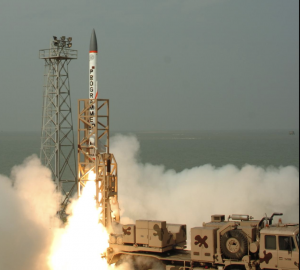India’s homegrown ballistic missile defense (BMD) system has reportedly been completed with the Indian Air Force (IAF) and the Defense Research and Development Organization (DRDO) seeking government approval to install and activate the system near the country’s capital, New Delhi, according to local media reports.
“The BMD program has been completed,” a top Indian government official was quoted as saying on January 8 by ThePrint. “All tests carried so far have been successful, including the radars and missiles. The IAF, which is responsible for the country’s air defense, and the DRDO, which has developed the system, will now move a joint proposal for the government’s clearance.”
The source added that once the permission has been granted by the government, it will take three to four years to install the BMD system. Furthermore, the source said that it is up to the government to extend BMD to the country’s financial hub, Mumbai. “BMD is for Delhi. It is up to the government to decide which other cities will get it,” the source said.
Neither DRDO nor the IAF have publicly commented on the purported completion of the BMD system.
India kickstarted its BMD program in 1999 following the Kargil War and in response to China and Pakistan’s expanding missile arsenals. The BMD system is two-tiered. The first layer is the Prithvi Air Defense (PAD)/Pradyumna and Prithvi Defense Vehicle (PDV) interceptors designed to destroy missiles at exo-atmospheric altitudes of 50–180 kilometers. (The PDV will reportedly eventually replace the older PAD/Pradyumna Ballistic Missile Interceptor.)
The second layer consists of the single stage solid rocket-propelled AAD/Ashin interceptor missile designed to shoot down incoming enemy missiles in the endo-atmosphere at altitudes of 15-40 kilometers.
India’s indigenous BMD system can reportedly intercept medium range ballistic missiles. PAD and PDV are designed for mid-course interception, while AAD is used for terminal phase interception system after missiles enter the earth’s atmosphere.
DRDO last successfully tested an AAD interceptor missile against a medium-range ballistic missile target in August 2018. The organization also test fired the AAD in December 2017. Additional tests of the AAD and PDV interceptors were conducted in March and February 2017 as well as in May 2016 and November 2015 respectively. In past tests, Prithvi-II or III tactical surface-to-surface short-range ballistic missiles usually stood in as ballistic missile targets.
India also conducted its first successful anti-satellite (ASAT) test, dubbed “Mission Shakti,” in March 2019. DRDO fired a modified version of the PDV anti-ballistic-missile interceptor, a so-called PDV Mark II missile to destroy a satellite orbiting at 285 kilometers in altitude. Some analysts have speculated that this will provide India with the capability of exo-atmospheric interception of intercontinental-range ballistic missiles.

































